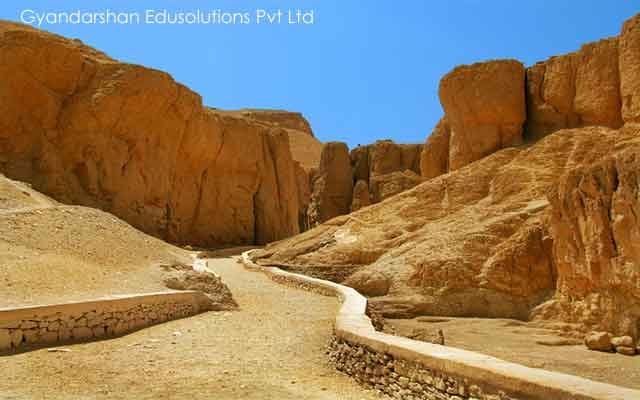Exploring the Enigmatic Valley of the Gates of the Kings, Egypt
Introduction
Nestled on the west bank of the Nile, near Luxor, the Valley of the Gates of the Kings, commonly known as the Valley of the Kings, is one of Egypt’s most iconic archaeological sites. This valley served as the final resting place for the pharaohs of the New Kingdom (circa 16th to 11th century BCE), containing over 60 tombs filled with rich history, exquisite hieroglyphs, and breathtaking artwork. Tourists flock to this UNESCO World Heritage site to witness the grandeur of ancient Egyptian civilization.
Best time to visit Valley of the Kings, Luxor historical sites travel guide, hidden tombs in Valley of the Kings, Egyptian archaeology attractions, must-see pharaoh tombs in Egypt, guided tours in Valley of the Kings, exploring ancient Egyptian burial sites, Valley of the Kings travel tips
Why Visit the Valley of the Kings?
- Ancient Tombs: Home to the tombs of legendary pharaohs such as Tutankhamun, Ramses II, and Seti I.
- Rich History: Offers a deep insight into ancient Egyptian beliefs about the afterlife.
- Stunning Hieroglyphics: Walls adorned with well-preserved artwork and texts.
- Mystical Atmosphere: A surreal experience walking through millennia-old pathways.
Key Attractions in the Valley of the Kings
1. Tomb of Tutankhamun (KV62)
- Specialty: The most famous tomb in the valley, discovered intact by Howard Carter in 1922. It contained the iconic golden death mask and treasures of the boy king.
- Locality: Located in the central area of the valley, easily accessible to visitors.
- Best Time to Visit: Early morning (8 AM – 10 AM) to avoid crowds and high temperatures.
- Nearby Restaurants:
- Marsam Restaurant – Authentic Egyptian dishes and Middle Eastern cuisine.
- El Hussein Restaurant – Known for local delicacies like grilled meats and fresh salads.
- Nearby Hotels:
- Al Moudira Hotel Luxor – A luxurious stay blending Egyptian and Mediterranean styles.
- Steigenberger Nile Palace – Offers comfort with a view of the Nile.
2. Tomb of Ramses VI (KV9)
- Specialty: Known for its striking astronomical ceiling, depicting the goddess Nut and various mythological scenes.
- Locality: Situated near the entrance, making it one of the most accessible tombs.
- Best Time to Visit: Before noon to capture the tomb’s beauty under natural light.
- Nearby Restaurants:
- Sofra Restaurant & Café – Serves Egyptian home-style meals.
- 1886 Restaurant – A fine-dining experience featuring French and Egyptian fusion cuisine.
- Nearby Hotels:
- Sonesta St. George Hotel Luxor – Ideal for travelers seeking comfort and luxury.
- Djorff Palace – A boutique hotel offering an authentic Egyptian ambiance.
3. Tomb of Seti I (KV17)
- Specialty: One of the most elaborately decorated tombs with intricate carvings and a long passageway.
- Locality: Further into the valley, requiring a longer walk but well worth the effort.
- Best Time to Visit: Mid-morning to early afternoon when sunlight enhances the colors of the walls.
- Nearby Restaurants:
- Abu Ashraf Restaurant – Offers traditional Egyptian seafood dishes.
- Nefertari Restaurant – Specializes in vegetarian and local cuisine.
- Nearby Hotels:
- Hilton Luxor Resort & Spa – A luxurious stay with spa facilities.
- Pavillon Winter Luxor – A heritage hotel with a touch of colonial charm.
4. Tomb of Horemheb (KV57)
- Specialty: Features unique, unfinished walls providing insight into ancient construction techniques.
- Locality: Located near the main path, making it easily accessible.
- Best Time to Visit: Late afternoon for a quieter, more immersive experience.
- Nearby Restaurants:
- Genesis Restaurant – Known for fresh Egyptian and Mediterranean dishes.
- Tutankhamun Café – Serves traditional Egyptian food with an ancient ambiance.
- Nearby Hotels:
- Jolie Ville Kings Island Luxor – A scenic riverside retreat.
- Aracan Eatabe Luxor Hotel – Budget-friendly with excellent services.
5. Tomb of Thutmose III (KV34)
- Specialty: A uniquely carved tomb featuring ladder-like stairs and a well-preserved burial chamber.
- Locality: Perched on a steep hill, requiring a short climb.
- Best Time to Visit: Early morning before the heat intensifies.
- Nearby Restaurants:
- Oasis Café Luxor – A cozy spot for light meals and refreshments.
- Cleopatra Restaurant – Offers traditional Egyptian cuisine with stunning views.
- Nearby Hotels:
- Nile Valley Hotel – A charming, locally run hotel with Nile views.
- Sunflower Guesthouse Luxor – A budget-friendly option with a homely atmosphere.
Best Time to Visit the Valley of the Kings
The best time to visit the Valley of the Kings is between October and April, when Egypt experiences cooler temperatures. The winter months provide a comfortable climate, making it easier to explore the tombs and surroundings without the intense summer heat.
Additional Travel Tips:
- Get There Early: The site opens at 6 AM, and visiting early helps avoid the crowds and heat.
- Dress Comfortably: Light, breathable clothing, a hat, and sunscreen are essential.
- Hire a Guide: A knowledgeable guide enhances the experience with historical context and stories.
- Carry Water: Hydration is key, especially during warmer months.
Conclusion
The Valley of the Kings is an unmissable destination for history enthusiasts and travelers alike. From the famous tomb of Tutankhamun to the intricately decorated chambers of Ramses VI and Seti I, this valley is a treasure trove of ancient Egyptian culture. With nearby accommodations and restaurants offering authentic experiences, a trip to this historic site promises an unforgettable journey through time. Whether you’re a first-time visitor or a returning traveler, the allure of the Valley of the Kings remains eternal.













